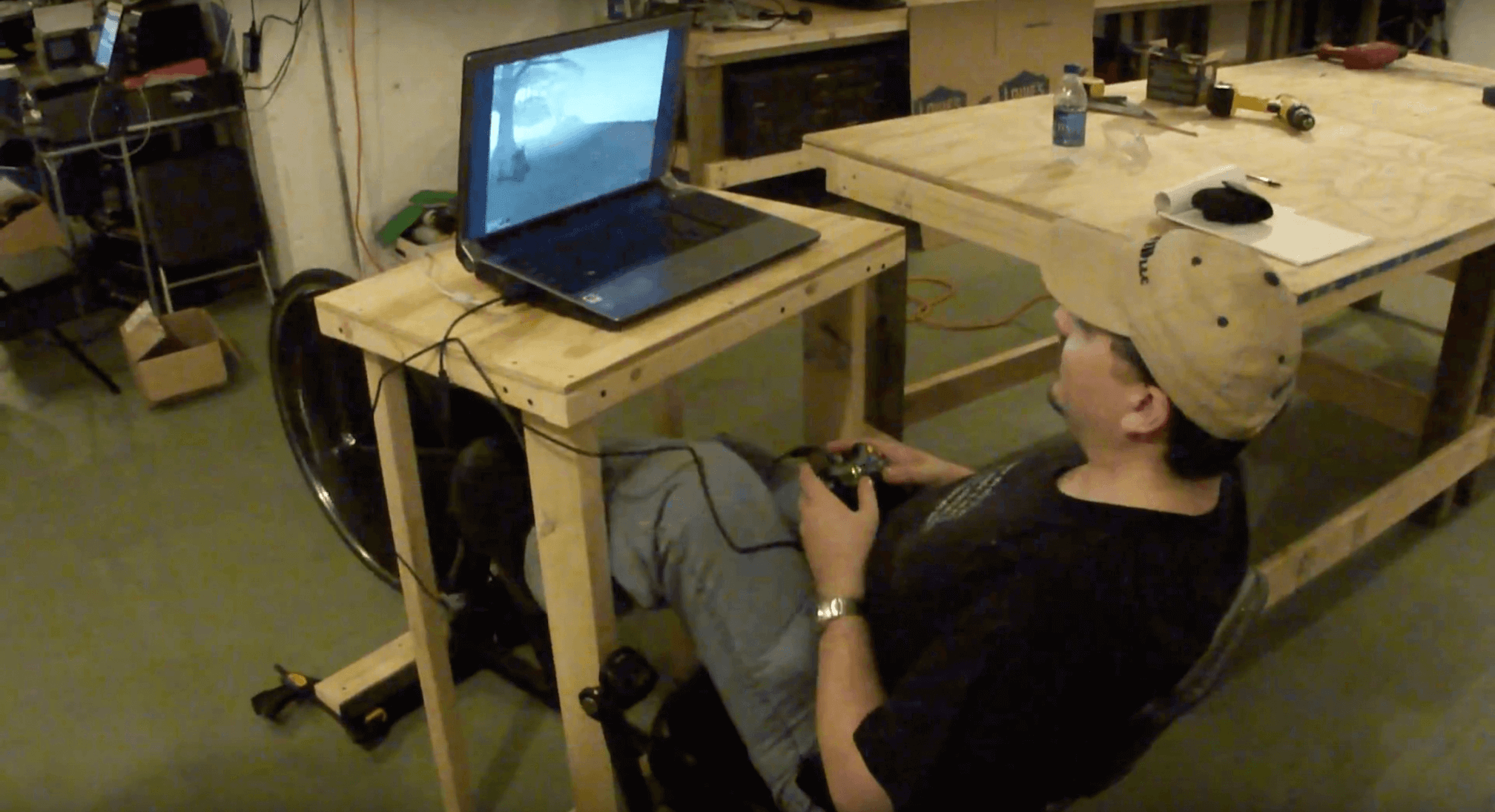About Holoseat
Early Days
J. started work on the Holoseat in the summer of 2011. J. was inspired by a bicycling interface for racing games called the “Excite Bike.” Players using an Excite Bike controlled their forward movement in racing games by pedaling a specially modified exercise bike: pedal faster and the car/bike/character moved faster, pedal slower and it slowed down, stop pedaling and it stopped.
The controls were elegant, but the implementation was expensive and limited to racing games (a genre J. did not play). So, J. set about making a lower-cost and more accessible (in terms of supported genres) “exerfied” game controller. The result of his effort was the first Holoseat prototype. As with the Excite Bike, the Holoseat controls were straightforward: pedal fast enough and your character walked forward, stop pedaling and your character stopped.
As with most prototypes, the implementation was buggy, but it worked well enough to prove the concept, as shown in an early demo video of J. playing a role-playing game (RPG) on the Holoseat.
J. took the lessons from this first prototype and developed the first reliable version of the Holoseat using a reed switch as the pedaling sensor (same sensor used on bike computers) and an Arduino Leonardo acting as a virtual keyboard to send walking commands to the game (usually in the form of pressing the “W” key).
Rev 1 worked so well that J. lost 45 pounds playing Star Wars: The Old Republic and Portal 2 in less than two years of gameplay (yes, with Holoseat, you measure exercise time in gameplay time).
During this time, J.’s gaming partner, Bryan Christian, became interested in the Holoseat. It was Bryan’s interest that gave J. the push he needed to get Rev 1 fully documented as open-source hardware.
Shortly after J. published the Rev 1 plans and source code, Bryan assembled a Holoseat of his own. Not long after, Bryan began contributing to the project starting with a Windows configuration application.
Public Reception
Bryan then organized Holoseat’s first public demonstration at a private gaming convention in August 2014. Holoseat was so popular at the convention that J. and Bryan began to consider how to commercialize Holoseat so gamers everywhere could “exerfy” their games (exerfy meaning to to mix exercise seamlessly into existing activities. See also “gamify.”)
However, there were user experience issues to address first, namely improved sensitivity of the “walking” motion and the inclusion of an appropriate small-scale exercise bike for users who did not already have one.
Holoseat Takes a Backseat
Few stories in real life are uninterrupted and linear. Such is the case for Holoseat. After the convention, J. and Bryan started making plans for how to develop Rev 2 incorporating the feedback they had received. Unfortunately, life got in the way, and Holoseat development was effectively stalled for most of 2015.
Upon returning to the same gaming convention in August 2015, J. and Bryan were asked repeatedly, “Where is Holoseat? When will it be for sale?” Needless to say, the message was heard loud and clear, Bryan and J. needed to deliver an updated Holoseat by the following August and move it to a commercial product as soon as possible after that.
Back to Production
J. and Bryan began work on Rev 2 in the fall of 2015, setting up a new development schedule and holding weekly status meetings. In early 2016, they founded Model B, LLC and transferred Holoseat from a personal to a commercial project (while still maintaining its open-source status – you can download the plans and software to build your own Rev 2 today).
Between January and August 2016, development picked up and Rev 2 was finished just in time to demonstrate it at the same private gaming conference in 2016. While there, Model B will collect updated feedback on the Holoseat and gather a list of prospective backers for a crowdsource campaign to launch Holoseat as a product.

